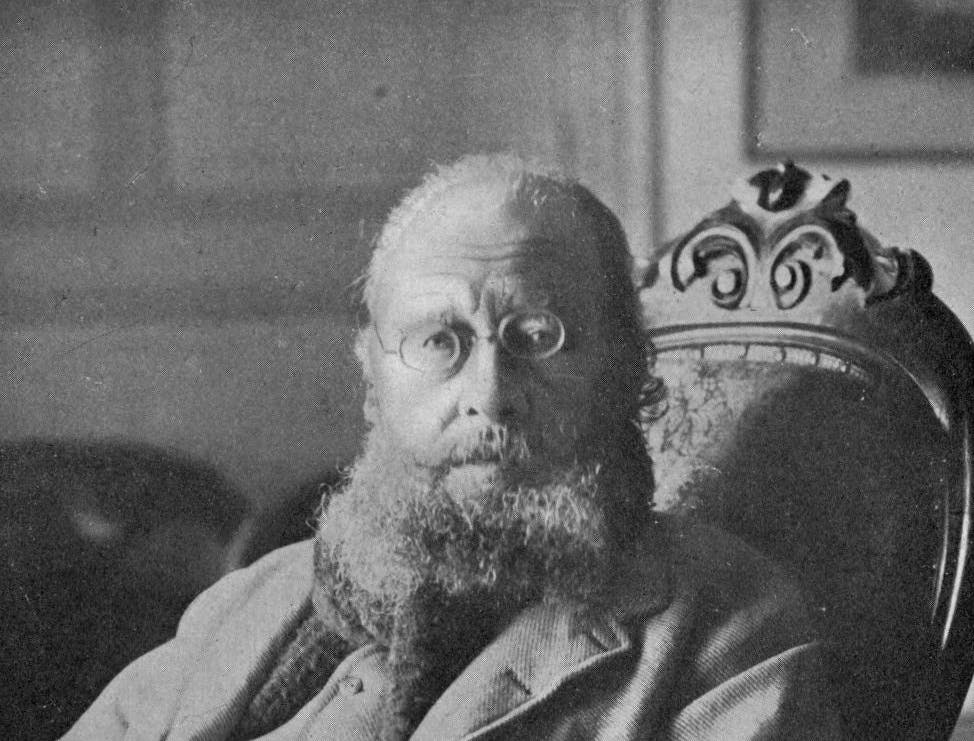Poem of the Day: ‘The Pobble Who Has No Toes’
Edward Lear must surely count as one of the most interesting and peculiar figures to live in the Victorian age — and that’s saying something, for the Victorians were as interestingly peculiar a people as the world has ever known.

Last week, on May 12, there passed little-remarked the birthday of Edward Lear (1812–1888). And we should not let pass entirely the opportunity to say something about a man who must surely count as one of the most interesting and peculiar figures to live in the Victorian age — and that’s saying something, for the Victorians were as interestingly peculiar a people as the world has ever known.
A commercial artist, best known for his illustrations of scientific and popular books about birds, he was also a musician. And painter. And composer. And eccentric traveler. And inventor of the limerick (leaving aside Mother Goose’s ur-texts). Out of all his work, it is his nonsense verse that has survived: poetic extravagances that, though they are mostly taken as children’s poetry these days, he intended as works to be appreciated by adults. Nonsense is serious business, and Lear was the best at it. Think of “The Owl and the Pussy-cat,” or “The Courtship of the Yonghy-Bonghy-Bò,” or “The Table and the Chair” (which appeared last year on his birthday in The New York Sun).
Or take today’s poem, “The Pobble Who Has No Toes.” In six eight-line stanzas, he shows us his rollicking meter of three and four feet, with just enough dactyls to make the lines tumble across the tongue. It’s a genius of a small kind: interesting and peculiar. And fun. What more could one want from nonsense?
The Pobble Who Has No Toes
by Edward Lear
I
The Pobble who has no toes
Had once as many as we;
When they said, ‘Some day you may lose them all;’ —
He replied, — ‘Fish fiddle de-dee!’
And his Aunt Jobiska made him drink,
Lavender water tinged with pink,
For she said, ‘The World in general knows
There’s nothing so good for a Pobble’s toes!’
II
The Pobble who has no toes,
Swam across the Bristol Channel;
But before he set out he wrapped his nose,
In a piece of scarlet flannel.
For his Aunt Jobiska said, ‘No harm
‘Can come to his toes if his nose is warm;
‘And it’s perfectly known that a Pobble’s toes
‘Are safe, — provided he minds his nose.’
III
The Pobble swam fast and well
And when boats or ships came near him
He tinkedly-binkledy-winkled a bell
So that all the world could hear him.
And all the Sailors and Admirals cried,
When they saw him nearing the further side, —
‘He has gone to fish, for his Aunt Jobiska’s
‘Runcible Cat with crimson whiskers!’
IV
But before he touched the shore,
The shore of the Bristol Channel,
A sea-green Porpoise carried away
His wrapper of scarlet flannel.
And when he came to observe his feet
Formerly garnished with toes so neat
His face at once became forlorn
On perceiving that all his toes were gone!
V
And nobody ever knew
From that dark day to the present,
Whoso had taken the Pobble’s toes,
In a manner so far from pleasant.
Whether the shrimps or crawfish gray,
Or crafty Mermaids stole them away —
Nobody knew; and nobody knows
How the Pobble was robbed of his twice five toes!
VI
The Pobble who has no toes
Was placed in a friendly Bark,
And they rowed him back, and carried him up,
To his Aunt Jobiska’s Park.
And she made him a feast at his earnest wish
Of eggs and buttercups fried with fish; —
And she said, — ‘It’s a fact the whole world knows,
That Pobbles are happier without their toes.’
___________________________________________
With “Poem of the Day,” The New York Sun offers a daily portion of verse selected by Joseph Bottum with the help of the North Carolina poet Sally Thomas, the Sun’s associate poetry editor. Tied to the day, or the season, or just individual taste, the poems are drawn from the deep traditions of English verse: the great work of the past, together with the living poets who keep those traditions alive. The goal is always to show that poetry can still serve as a delight to the ear, an instruction to the mind, and a tonic for the soul.
